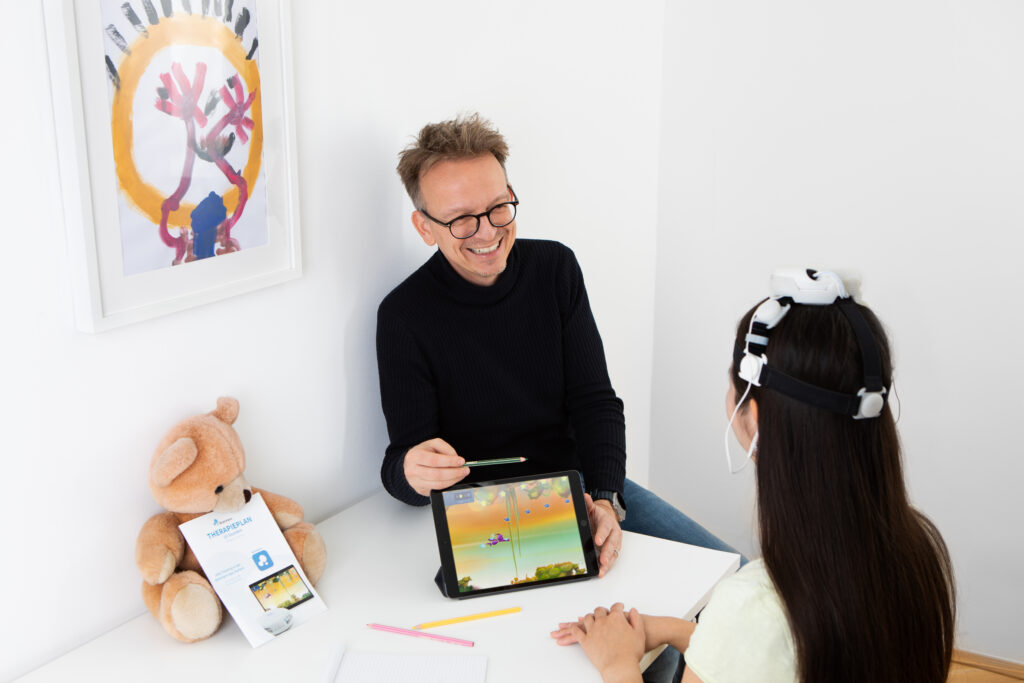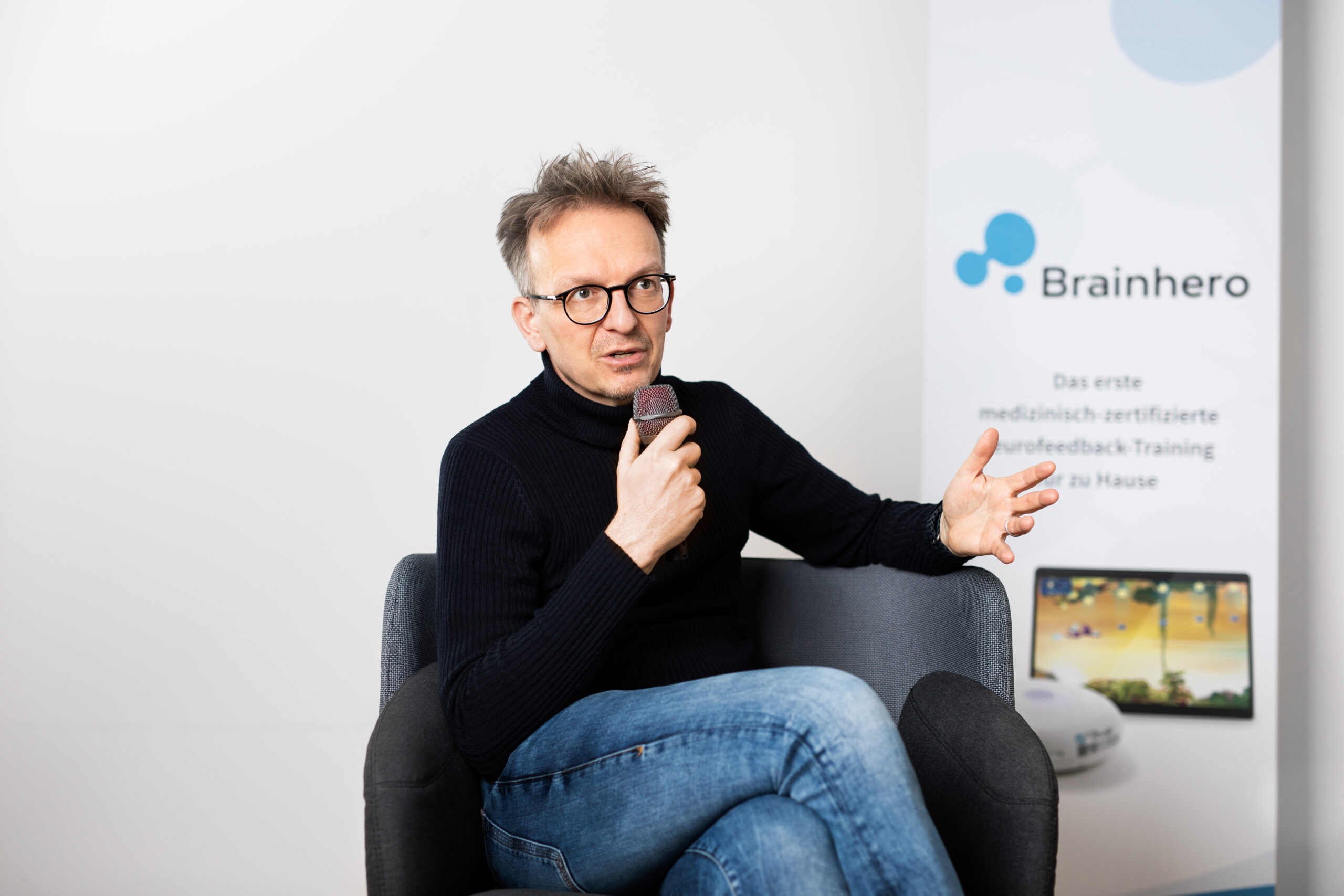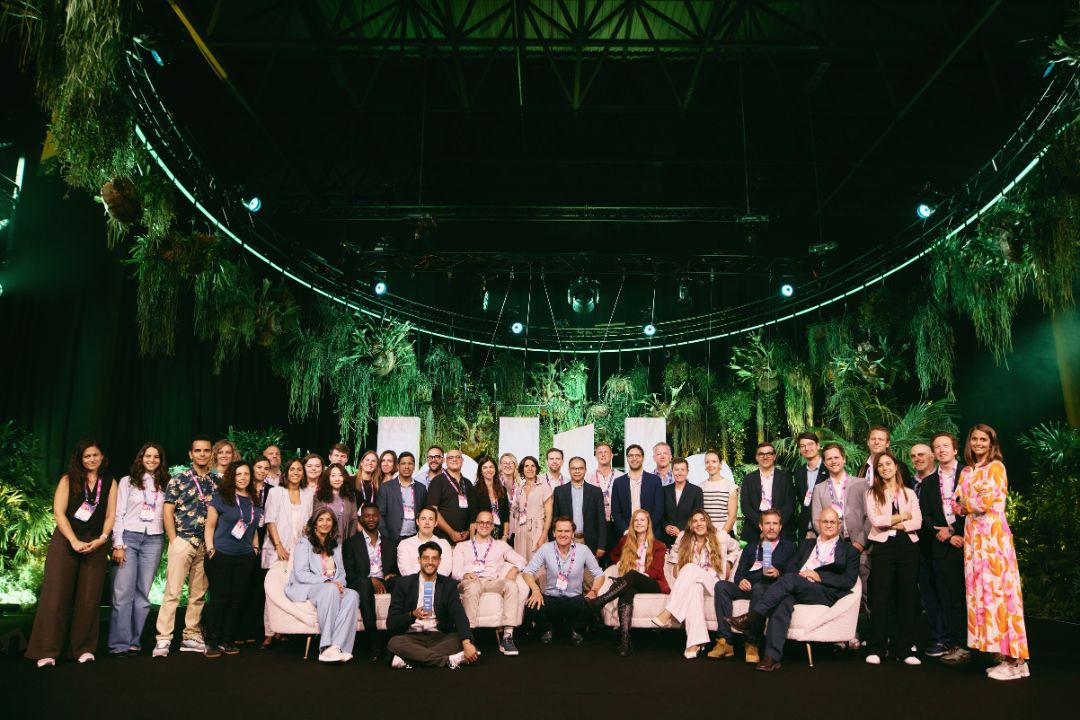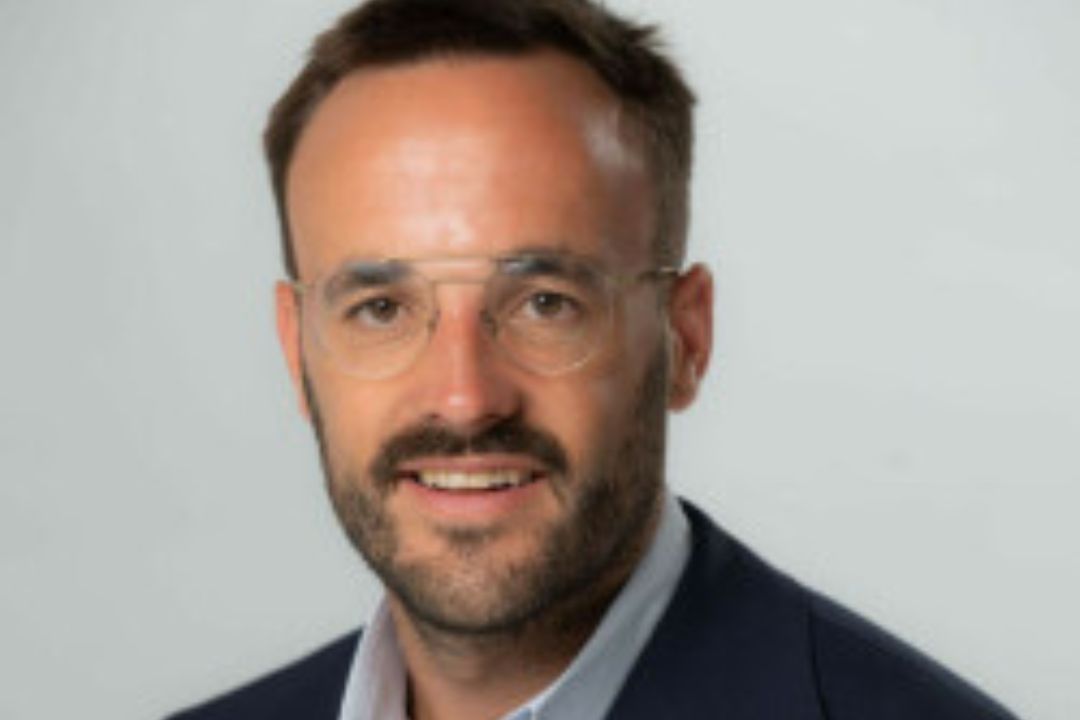16th November 2023
Meet Christof Goetz, the visionary founder of Brainhero, a company that’s at the forefront of neurotechnology innovation. In this interview, we dive into his unwavering dedication to making therapy more accessible and his groundbreaking approaches that are transforming the way we tackle neurological challenges.

Brainhero
Q: Can you share a bit about yourself and the driving force behind your life’s pursuits?
CG: I was born and raised in a small town in the heart of Germany. My father was working in IT, which in the mid-seventies was very different from what we understand today. But since that time, I have been fascinated with what we can do with computers and how we can use the technology to understand our brain, our health and to find and explore new treatments that would not exist without this technology.
About myself: I am 51, married and live in Vienna with two kids: A boy and a girl. My daughter is on the autistic spectrum. I believe technology can assist her development, but since I could not find any sufficient solutions out there, I founded Brainhero 5 years ago. We develop brain technology to find and treat neurological issues with easy-to-use technology that can be applied by anyone.
Q: What are some of your most significant achievements to date?
CG: First, I think being married and having found a partner for life is the foundation for anything in life. Without my wife I would not have been able to do what I do and I hope that we can continue supporting our daughter in her development.
Second, having found the people and the team at Brainhero. A team that burns for what we want to achieve and that we can make a difference in families. It is not always easy when you have to comply with the most challenging regulatory framework, especially as we bring the technology home to the patient.

“We develop brain technology to find and treat neurological issues with easy-to-use technology that can be applied by anyone.”*
Q: Following your extensive management experience, you embarked on the journey to establish Brainhero. Could you tell us about the inspiration behind this project?
CG: Brainhero was created from a student project that I did to help my daughter. Initially, we did not expect that much of an impact, but as we saw more changes happening and that these changes really mattered in her development, we simply had to form a company to make the technology available to others.
However, what I underestimated was the level of regulation that is required to build such a company, especially when you do hardware AND software and both components are delivered to the patient’s doorstep.
Q: Could you explain the mechanics of Brainhero’s therapy?
CG: Children are very dependent on their caregivers and playmates during their developmental phase. This is because they learn from them how to explore the world and interact with it. Imitation, also known as “mirroring”, plays a major role in this.
Children with autism find this kind of imitation much harder. This is because their brain connections are different. As a result, the same imitation action requires more effort.
Brainhero can help children with autism train specific brain regions using neurofeedback technology, which helps then in developing social skills, communicating with others, and adapting one’s behavior to the environment or situation.
Q: What are your thoughts on the current landscape of autism treatment in the public domain?
CG: Autism is a very complex neurological disorder. If you know one person with autism, you know one person with autism. But in public, there is usually only one type of autistic person: The one who is socially strange but is kind of supersmart. But this is only a small part of the population of all autistic people. There are many children who are not able to speak, have epilepsy, or have other overlapping neurological issues.
Unfortunately, even scientists strengthen this picture when conducting studies that are only targeting these kinds of children. I understand why: They want to deal with the issue of autism and not the other neurological issues that come with autism in 90% of all cases. But if you want to deal with autism, you cannot ignore the other issues, if you really want to generate an impact. That is why we are dealing with those overlapping issues and also offering ADHD therapy at home, as 30% of cases of autism come with ADHD.
Q: If you could offer advice to parents of children with autism, what would it be?
CG: The key is structure; you will need a daily routine for your child. This is how their brains can best develop. And then: Be patient. Very patient. Find ways to calm down and have time that is just for you. You will need a lot of strength and discipline.
Q: In what ways do you believe Brainhero has the potential to revolutionize the field?
CG: The current therapy that we offer is just a starting point. We are limited by the clinical data we have, meaning that the therapy needs to be finished after 20 hours of therapy. But I believe there is much, much more.
There has never been a time with that much research happening in the Brain-Computer-Interface field. We are involved in some of that research, i.e. detecting dementia years in advance or detecting other neurological issues early using easy-to-use neurotechnology. I think we have the technology to make these scientific advancements a reality as a medical device that can find and treat those issues effectively, making life more liveable for the patients affected.

“Brainhero can help children with autism train specific brain regions using neurofeedback technology, which helps then in developing social skills, communicating with others, and adapting one’s behavior to the environment or situation.”*
Q: Can you elaborate on your experiences working with EIT Health?
CG: EIT Health was a great entry for us in terms of networking with the right people and the right scientists, who otherwise would have never heard of us. The connections we made with EIT Health two years ago are the foundation of our scientific projects we do today. And we are really grateful to be part of the EIT Health community, even though we did not get funding through EIT Health.
Q: Looking ahead, what are your aspirations for the future? Could you provide insights into what’s on the horizon for Brainhero in the next year?
CG: We are currently working on our therapy to become more scalable, meaning that we are using the feedback we receive from our patients to improve onboarding and the therapy experience. In addition, we are working on the next generation of hardware that will also form the basis of the next generation of therapy with clinical trials with our university partners: Trinity College Dublin and Coimbra University in Portugal. We also plan to enter new markets such as the UK and the US in the upcoming years.
Beside that, we are working on our first products in the diagnostic field, including home-based EEG technology to support patients with epilepsy or other neurological issues.
Thank you Christof!
Follow us on LinkedIn for more interviews and most up-to-date information about our community!
*Photos Credit Brainhero & Martin Aigner
Europe's top health start-ups take centre stage: EIT Health Catapult winners are revealed at HLTH Europe

2025 Catapult programme winners announced.
Finding Europe’s next healthtech leaders: Insights from Antoine D’Hollander

Insights from Antoine D’Hollander, Capricorn Partners.
EIT Health supports 17 promising deep tech start-ups bridge the ‘Valley of Death’

Providing start-ups with the right support.